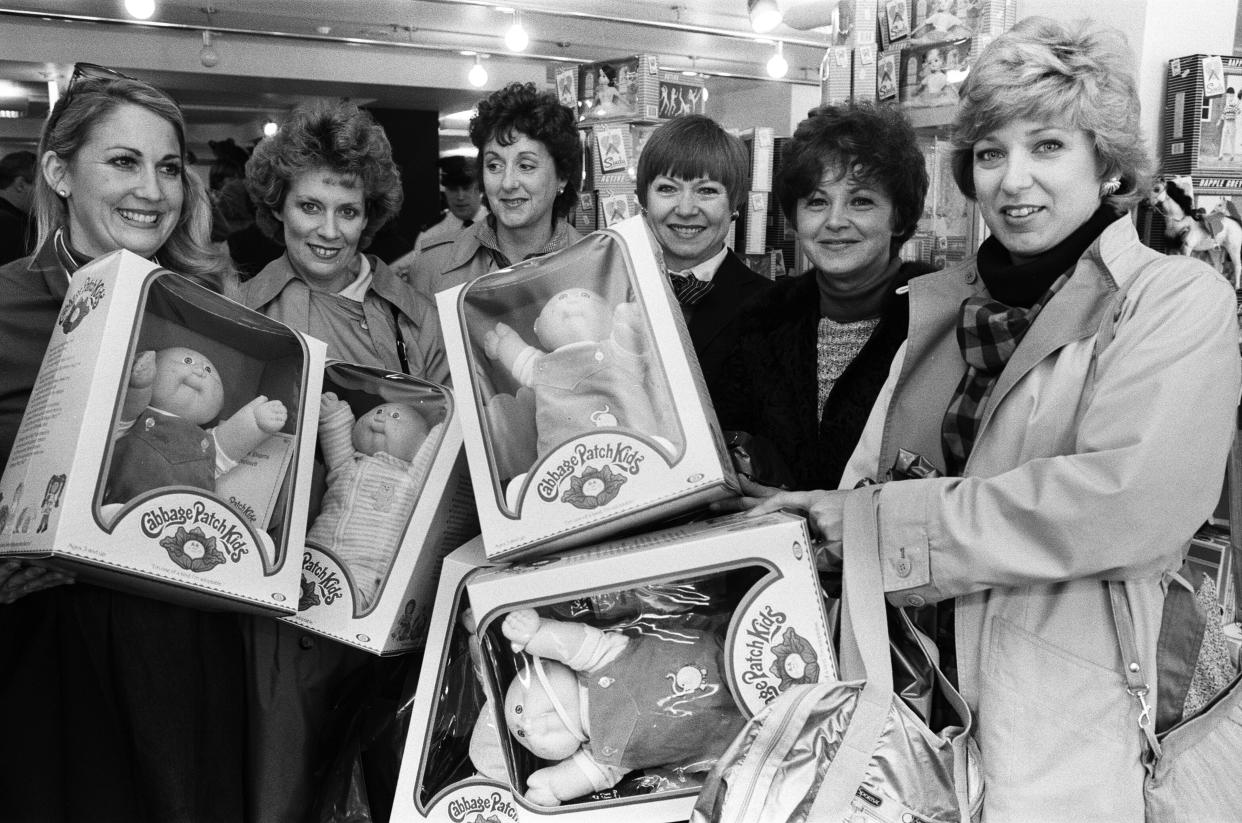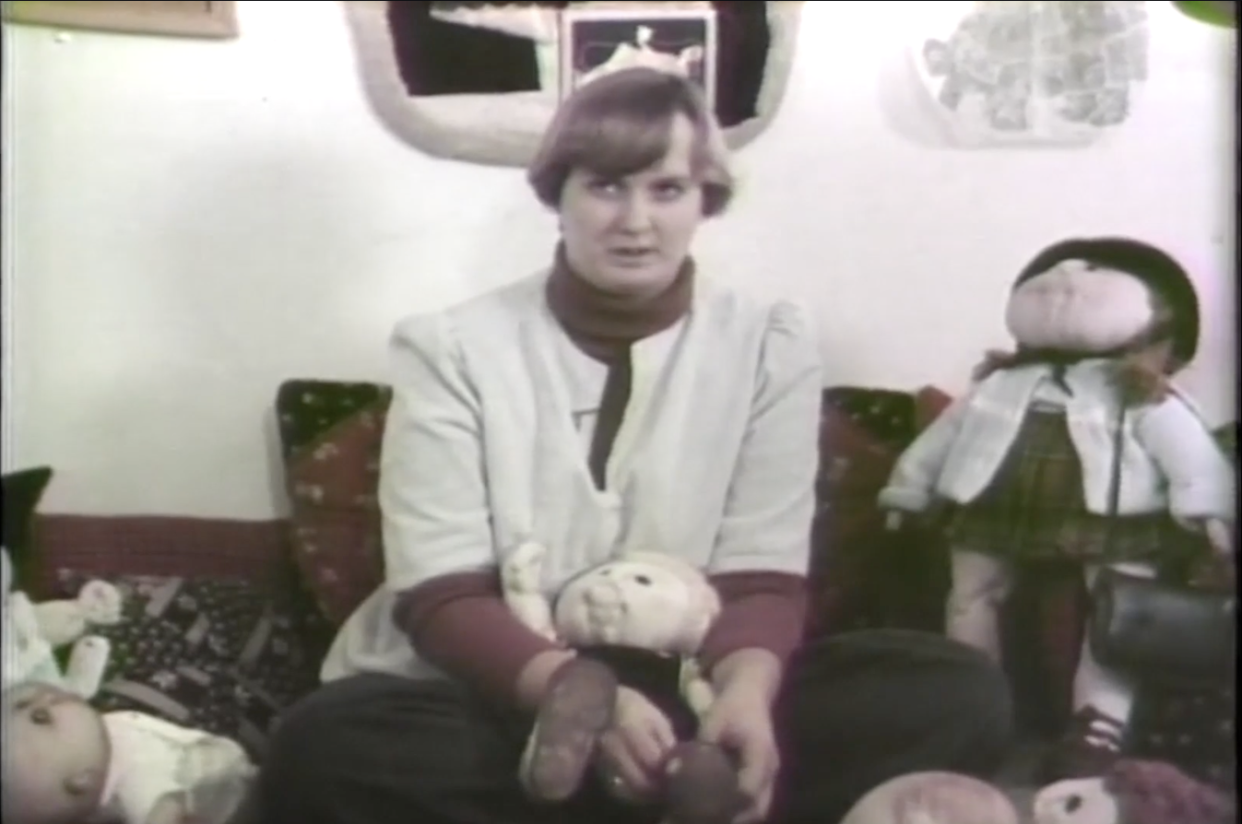#How the Cabbage Patch Kids craze of 1983 helped create Black Friday as we know it

Table of Contents

As shoppers line up for Black Friday, whether online or in person, be thankful that those lovable, squeezable Cabbage Patch Kids are not atop the wish lists of most kids, like they were this time 40 years ago.
As heartwarming as the dolls with various eye colors, hair colors and dimples were, parents’ mad dash to buy the plush toys to have under the Christmas tree for their children in 1983 led to uncontrollable mobs. A Pennsylvania manager infamously took out a baseball bat to defend his store, where several people were injured.
The new documentary Billion Dollar Babies: The True Story of the Cabbage Patch Kids, narrated by Neil Patrick Harris, recounts the hysteria over the dolls that erupted when demand for them exploded — and the company behind them, Coleco, was unprepared. Even before Thanksgiving, with millions already sold, the Consumer Affairs Commissioner for New York’s Nassau County had charged Coleco with false advertising, because when shoppers went to buy the dolls the consumers had seen in ads, the toys were already gone. Coleco temporarily stopped advertising while ramping up production, but it was too late, as seen in the exclusive clip below.
Billion Dollar Babies executive producer Dan Goodman draws a direct line from the Cabbage Patch Kids craze to future Black Friday mob scenes.
“I think there’s no denying the fact that it had a lasting impression on not just toy manufacturers, but just the retail world in general about what happens with scarcity,” Goodman tells Yahoo Entertainment. “I mean, if you look at what took place with Tickle Me Elmo and Furby and Tamagotchis and all of these things, you can’t help but see the parallels between those events and Cabbage Patch Kids.”
Director Andrew Jenks says the phenomenon served as a lesson to toy companies.
“I think what Cabbage Patch Kids certainly did is make big companies aware or reinforced the idea of just how big of a difference it can make if you have a shortened supply,” says Jenks, the former star of MTV’s World of Jenks. “By that, I mean, Coleco was … quite surprised at how many people, millions and millions of people, wanted one, and they didn’t have enough. They made a big announcement that there would be no commercials, and obviously that just created an even bigger craze. I think this idea of, whether purposeful or not, letting the public know that there’s only so many you can get, is a strategy that has certainly been used in the years since.”
They made a big announcement that there would be no commercials, and obviously that just created an even bigger craze.Andrew Jenks, director
It was conversations the filmmakers had to make about what the first Black Friday after the pandemic would be like that inspired them the film.
“We thought, ‘Man, people are going to go crazy. They’ve been cooped up this entire time, and this first time we’re going to be allowed back in stores and people are going to kill each other,'” Goodman says. “It’s going to be crazy.”
One of them brought up Cabbage Patch Kids.
“As we started really delving into it, we realized that Cabbage Patch Kids was the first time retail shopping turned violent,” Goodman says. “There were great fads and stuff before, but nobody went to the hospital when they went to Toys ‘R’ Us, or a Kmart or something to buy a toy. I think it was that jumping off point that led us down this path of looking at the broader scope of the story of capitalism and how it’s progressed and gotten us to where we are as a society today.”
The disputed birth of Cabbage Patch Kids
They dug into other factors behind the mania, too, like how America was coming out of an economic depression, and the fact that many of the parents involved in the Cabbage Patch wars had been raised by children of the Great Depression.
“Now you’ve got … parents who are trying to come to terms with, I want to do for my kids that was never done for me and that now I can provide for,” Goodman says. “I just think it was a really fascinating look into what these dolls represented at this very perfect time when credit cards were becoming popular and retail was back and the economy was improving. It’s a really fascinating look at relationships between parents and children and society at large that I didn’t really expect to find, and I think it gives the film a lot of heart as well.”
Billion Dollar Babies features interviews with subjects as varied as Connie Chung, the veteran journalist who worked on NBC’s morning show at the height of the craze; a man who recalls accompanying his mom into the fray back in 1983, in pursuit of a doll for his sister; the adult children of the late Martha Nelson Thomas, who created the soft-sculpture Doll Babies in the ’70s but did not copyright them; and Xavier Roberts, the credited founder of Cabbage Patch Kids whose signature appears on the bottoms of each one.

Roberts had come across Thomas’s dolls at a craft fair and wanted to sell them in his gift shop, but they couldn’t come to an agreement. According to court records, he wrote her a letter saying he would “carry your type of dolls, either made by you or someone else.”
The two were locked in a court battle for years, and they eventually settled out of court. (Thomas died in 2013.)
Getting them all on board was no easy feat.
The ugly vs. cute debate
“No, we were actually in production filming. We did not have Xavier Roberts on board to do an interview. We couldn’t even find him,” Jenks says. “It took months and months and months to track him down. I found his high school yearbook and called classmates of his. He hadn’t been seen in years. He hadn’t done an interview in about 25 years and had never done an interview where everything was on the table. We eventually tracked him down, and kudos to him, he didn’t just give us an hour. We spent hours and hours with him interviewing him. Then I think it’s important to make, I like to make documentaries that don’t lead you one way or the other. We present different sides to the story. We’ve had different people watch the film and they leave with very different opinions. I think that was a big goal of ours going into this.”

Still, they wanted their story to leave people feeling… something.
“I think it was important to us … not to make a Wikipedia version of the Cabbage Patch Kids,” Goodman says. “You can go read the history if you want to read the history, but I think … it will be surprising to a lot of people when they see just the depths of insight and new information and perspectives that we pulled out of this. It would’ve been very easy to make one person a villain and one person a hero, or just kind of tell the history of the thing, but that’s not life. That’s not the way the world works. Things are complicated and nuanced and messy. I think that’s part of what made the [Cabbage Patch Kids] brand very successful to this day, and we really wanted to capture that. Having Xavier was great, and having Martha’s kids to offer that perspective, a different perspective of art and capitalism and how those things do or don’t work together was really important to us.”

The documentary also examines why people wanted Cabbage Patch Kids — and a seemingly endless supply of merchandise featuring the dolls, which were always referred to as “babies” — in the first place. What was it about these particular dolls that drove people to spend hours out in the cold waiting for a chance to snatch one up. It theorizes that there were a combination of factors: the peer pressure and knowing that everyone else wanted one; the uniqueness of the dolls, which came with adoption papers and specific details; and the fact that they were, um, maybe not as attractive as others.
“There is a large faction of people in the public who do still to this day feel like they’re potato-faced, ugly dolls,” Jenks notes. “I think what we found was the vulnerability is the thing that made them so relatable to kids. The way that they were vulnerable was they weren’t perfect. They didn’t have blonde hair, blue eyes, Barbie doll style. They looked and felt like a lot of these kids did. They had different eye colors, different hair colors, different skin tones. They had dimples, some of them had braids. You could really see yourself in them as a kid. I think that’s one of the first manufacturers that really capitalized on the technology to be able to customize something on a mass production level.”
Billion Dollar Babies premieres in select theaters on Nov. 24.
If you liked the article, do not forget to share it with your friends. Follow us on Google News too, click on the star and choose us from your favorites.
For forums sites go to Forum.BuradaBiliyorum.Com
If you want to read more News articles, you can visit our News category.




